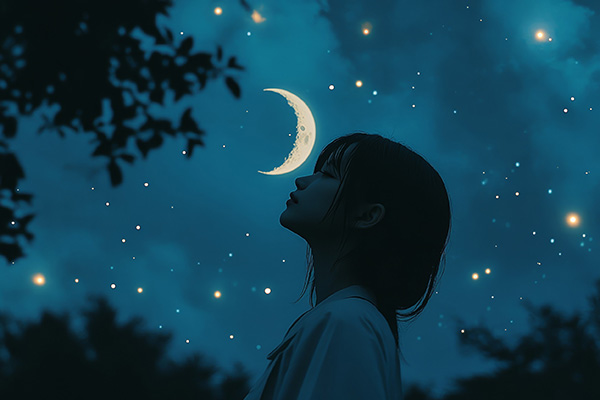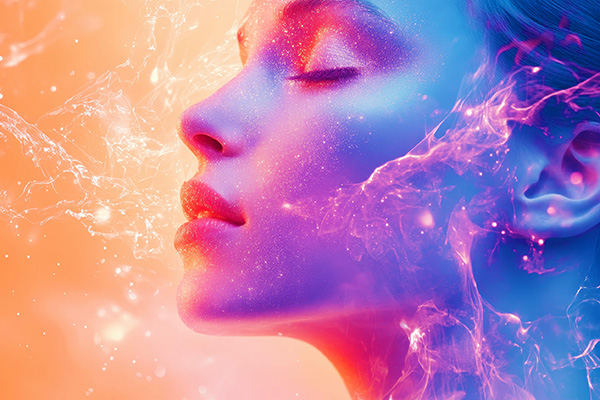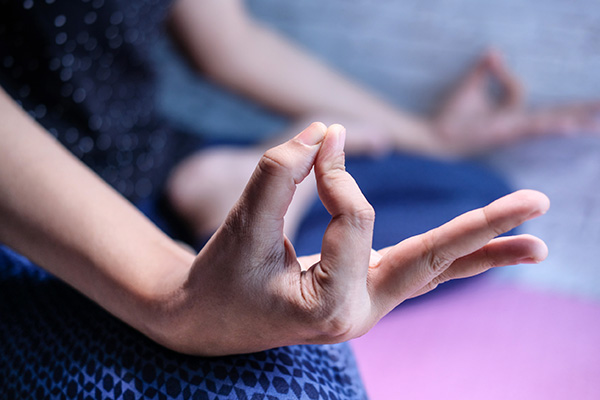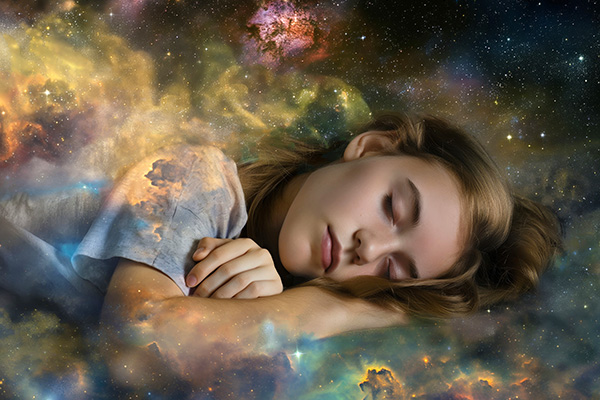yoga
The Manifesting Power Of Mindful Mornings
 Mornings are special. The energy of the morning is different than at any other time. When the sunlight is still fresh and gentle, the world is calm and quiet, there is a magic to this time. There is a softness that invites clarity, a gentle nudge from the universe to begin again, to step into a new day with intention and grace.
Mornings are special. The energy of the morning is different than at any other time. When the sunlight is still fresh and gentle, the world is calm and quiet, there is a magic to this time. There is a softness that invites clarity, a gentle nudge from the universe to begin again, to step into a new day with intention and grace.
The first few moments of our day help to set the tone for our experiences throughout. Becoming aware and attuned to this fresh universal energy can be as simple as creating a small morning routine.
Now, I realize not everyone loves the morning as much as I do. If this is the case for you, the idea of creating a morning routine may not sound appealing at all. Starting with small, quick steps can make all the difference here.
Your morning routine is meant to set you up for success. It is about doing things you like in the morning, that get you in the right frame of mind and heart.
Bringing a bit of mindfulness into your morning can set you up energetically to respond more effectively to your experiences throughout the day.
Below is a list of things you can do in the morning to create a personalized routine that works for you. You certainly don’t have to do all them! Just pick one or two to get started and build from there. While consistency is important, if something is not working for you, change it up and try something new. This routine should be fulfilling and meaningful to you.
How To Be Mindful On The Go!
 To some individuals, being mindful while on the go might seem a contradiction in itself. However, the truth of the matter is that there are a plethora of ways to cultivate the art of mindfulness that do not involve simply sitting still.
To some individuals, being mindful while on the go might seem a contradiction in itself. However, the truth of the matter is that there are a plethora of ways to cultivate the art of mindfulness that do not involve simply sitting still.
People turn to mindfulness for many reasons. For example, they may have a medical condition that needs managing, work issues that require resolving, or just simply want to feel more present in their everyday lives.
With the pace of modern life, it is clear to see why people become easily distracted and lead somewhat complicated lives as a result – all of which can be both emotionally and physically draining.
Whatever the reasons may be as to why a person turns to mindfulness, it should, indeed, help them to create a more balanced lifestyle.
That said, mindfulness should not be seen as a magical cure-all, but more an efficient way of relating to personal issues differently.
Interestingly, research has revealed that physiological changes do actually take place within an individual practicing mindfulness meditation. Such changes occur within the brain and some people experience better blood pressure and an enhanced immune system.
The above said, even those among us who practice mindfulness faithfully, can find it somewhat challenging to take what we have learned and incorporate it into our everyday lives. Instead, we tend to allow ourselves to be distracted and develop automatic behavior patterns instead.
Aligning With Lunar Energy Can Transform Your Life
 The Moon may appear subtle and serene in the night sky, but don’t be fooled. Her influence on our lives runs deep.
The Moon may appear subtle and serene in the night sky, but don’t be fooled. Her influence on our lives runs deep.
Many of us feel her pull, experiencing everything from restless sleep to emotional surges, even if we don’t quite understand why. Her cycles are ancient, her rhythm is eternal, and her whispers can guide us toward profound inner harmony if we choose to listen.
The Moon has been a source of mystery, reverence, and deep spiritual connection for humanity since the dawn of civilization. Across cultures and generations, she has been worshiped as a deity, tracked as a celestial guide, and honored through rituals that align with her phases.
Ancient civilizations such as the Babylonians, Egyptians, and Greeks meticulously studied her movements, associating them with tides, fertility, and even the passage of time.
The lunar calendar, still used in various traditions today, reflects the importance of her cycle, shaping religious observances like Ramadan and the Chinese New Year.
Her phases—waxing, full, waning, and new—have inspired countless traditions rooted in transformation and renewal. The Full Moon, in particular, has been regarded as a time of heightened energy, illumination, and manifestation.
In the realm of personal and spiritual health and well-being, the Moon is also much more than a celestial body. She is a divine force and a sacred mirror to our innermost energetic tides. By syncing with her cycles, we can unlock a deeper connection to ourselves, the Earth, and the Universe.
From Resentment To Radiance: The Power Of Forgiveness
 As a Kundalini yoga instructor, I’ve come to understand forgiveness as much more than just an act of kindness or compassion. It is a sacred healing practice — an essential release and transmutation of toxic energy held within the subtle body.
As a Kundalini yoga instructor, I’ve come to understand forgiveness as much more than just an act of kindness or compassion. It is a sacred healing practice — an essential release and transmutation of toxic energy held within the subtle body.
My work as a Reiki healer and psychic reader has deepened my understanding of this concept. I’ve witnessed firsthand how unresolved emotional pain, bitterness and resentment can create stagnation in our energetic pathways, dimming our vitality and obstructing our intuitive abilities.
In both healing sessions and psychic readings, I’ve seen forgiveness spark remarkable shifts in people’s physical, mental, emotional and spiritual well-being.
In the Kundalini Yoga tradition, forgiveness is not merely a moral ideal. It is a profound energetic cleanse. When we cling to resentment, anger, or betrayal, we create dense energy imprints, or emotional residue, in our aura and chakras, especially around the heart center (Anahata). These blockages disrupt pranic flow, dull intuitive perception, and limit our capacity to experience divine love.
My yoga teacher, Yogi Bhajan, often reminded us that the fastest route to healing and happiness is to forgive completely and limitlessly. He taught that true forgiveness requires releasing the subconscious “recordings” and emotional patterns etched into both hemispheres of the brain — patterns that replay pain and perpetuate karmic loops. “Forgive, release, learn, love, and excel,” he would say. Continue reading
How To Maintain A High Vibe Every Day
 Have you ever noticed how some days everything just flows effortlessly? You feel light, connected, and full of joy. Then there are other days when it feels like you’re wading through emotional molasses. What’s the difference? It’s all about your vibration.
Have you ever noticed how some days everything just flows effortlessly? You feel light, connected, and full of joy. Then there are other days when it feels like you’re wading through emotional molasses. What’s the difference? It’s all about your vibration.
Your personal vibration is the energy frequency you send out. It fluctuates constantly depending on your thoughts, emotions, environment, and spiritual practices.
Here’s the truth: Being aware of your vibration is everything. Once you’re tuned in, you’re empowered to take action. Without awareness, it’s easy to fall back into old, low-energy habits that pull you further away from your center.
Negative energy isn’t just unpleasant — it attracts more negativity. The longer you dwell on it, the harder it is to pull yourself out of it.
That’s why it’s crucial to shift your energy as soon as you notice yourself slipping into it. Like attracts like, so if you want more peace, joy, and abundance, you must become a match for those energies.
Your vibration affects everything. It influences your relationships, health, connection to the spiritual world, and even luck. Low vibes are often linked to negative feelings like fear, anxiety, and doubt. But the good news is that… High vibes bring clarity, love, intuition, and flow. Maintaining a high frequency in today’s chaotic world isn’t always easy, but it’s absolutely worth the effort.
How Mudras Connect Mind, Body and Soul
 Have you ever wondered why some people hold their fingers in unusual positions while meditating?
Have you ever wondered why some people hold their fingers in unusual positions while meditating?
These sacred hand gestures, known as mudras, are not just meant to “look cool” — they are a powerful energetic practice rooted in ancient spiritual traditions. They are intentional postures designed to channel energy, focus the mind, and deepen spiritual connection.
Mudras are an integral part of many spiritual lineages, most notably Kundalini Yoga – an energetic healing science that dates back thousands of years – as well as Hinduism, Buddhism, Jainism, classical Indian dance, and yogic disciplines.
Its origins can be traced back to the Vedas, the oldest sacred texts of Hinduism, where mudras were used in rituals to invoke divine blessings and spiritual power.
Over the centuries, these gestures have evolved into essential tools within yoga, tantra, and meditation practices. Their purpose: to help the practitioner direct subtle energies, sharpen awareness, and align with a higher consciousness.
In Sanskrit, mudra means “seal,” “sign,” or “gesture.” Far from mere physical postures, these gestures connect body, mind, and spirit, forming an energetic circuit that speaks directly to our auric field. Each mudra is a subtle energetic signal – each finger position resonating with specific astrological influences, emotional states, and elemental energies.
While some mudras involve the entire body, most are performed with the hands and fingers. Their effects are both profound and practical, enhancing spiritual practice, supporting healing, and facilitating the flow of life-force energy (prana or chi) through the body.
